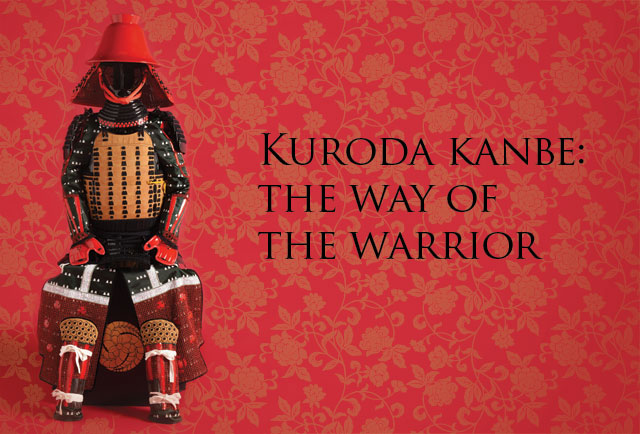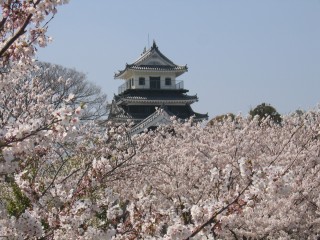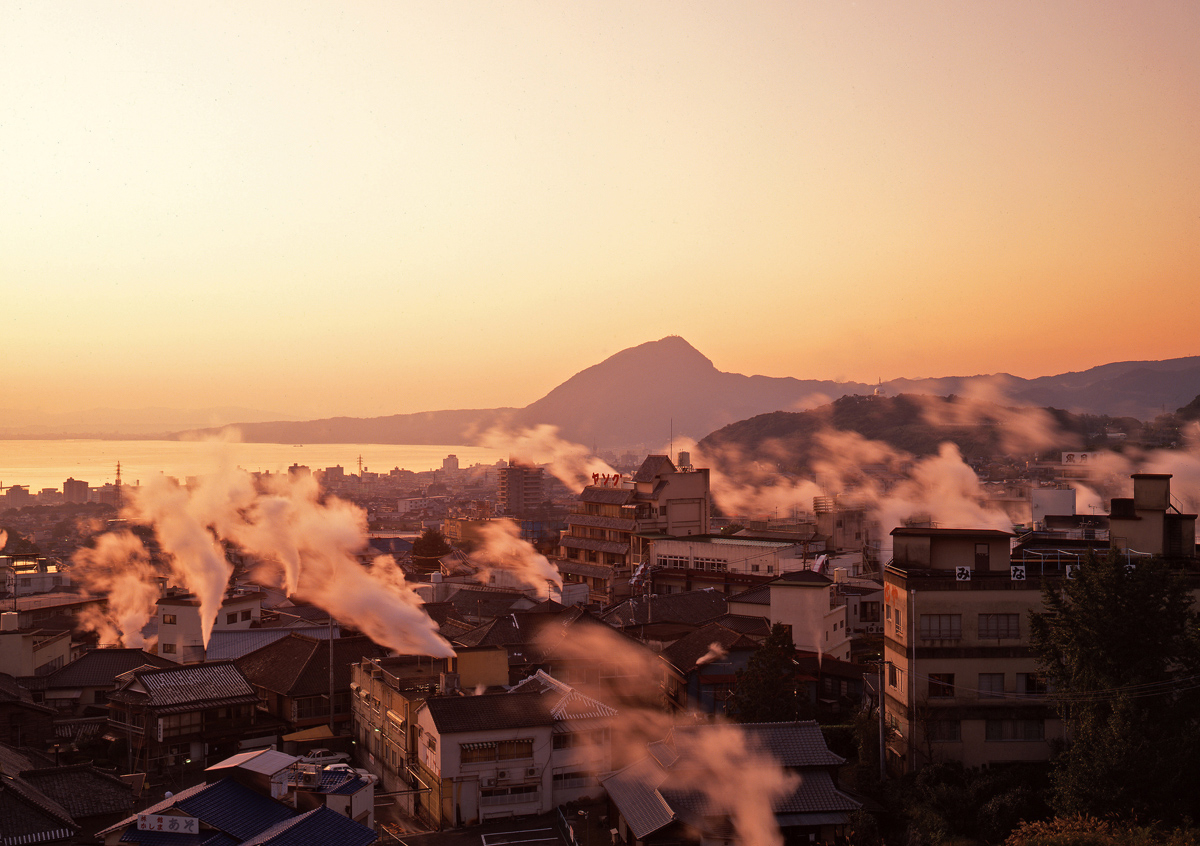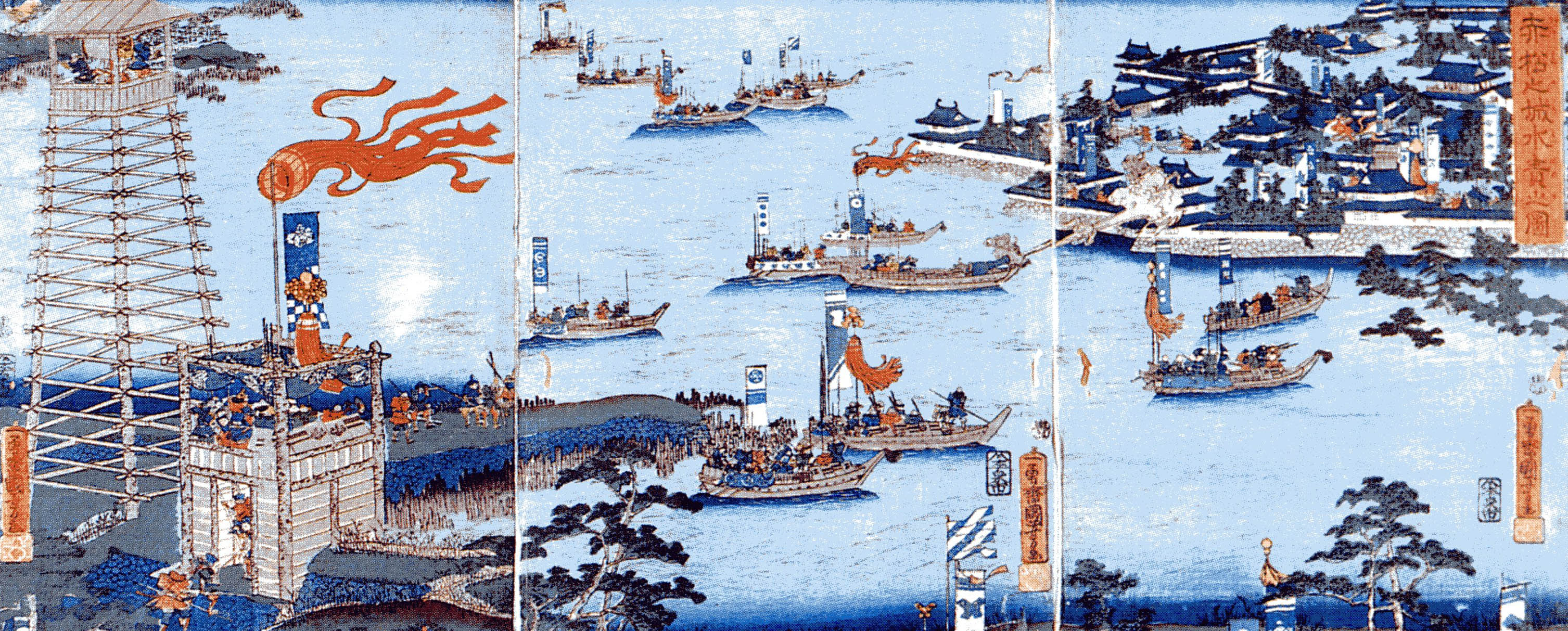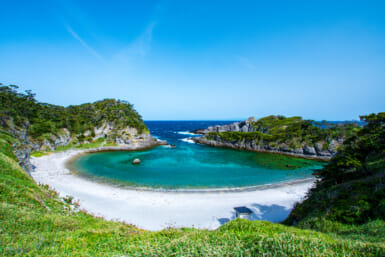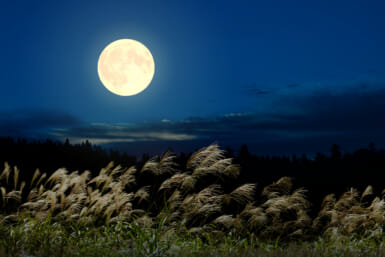The founding father of the Fukuoka domain and hero of the popular drama Gunshi Kanbē now showing on NHK, Kuroda Kanbē was one of Japan’s most iconic warriors. A samurai of great honor and courage, he was a master tactician who served as chief strategist and advisor to the preeminent Daimyo Toyotomi Hideyoshi.
Kuroda Kanbe
1546: Born in Himeji
(present day Hyogo Prefecture).
1567: Leads the Oda clan’s main attack that brought down Inabayama Castle in Mino Province (present day Gifu Prefecture),
1576: Swears fealty to the Oda clan, and aligns himself with Toyotomi Hideyoshi.
1578: A rebellion at Arioka Castle (in present day Hyogo Prefecture) leads to Kanbē’s confinement. Injured in his escape, he would focus on strategy for the rest of his life.
1582: Devises the mizuzeme (castle flooding) siege attack on Bitchutakamatsu Castle.
1585–87: Serves with Toyotomi Hideyoshi on campaigns in Shikoku and Kyushu.
1588: Builds Nakatsu castle in Oita.
1592–97: Engages in several military expeditions to Korea on behalf of Hideyoshi.
1598: Toyotomi Hideyoshi dies, and Kanbē joins with Tokugawa Ieyasu.
1600: Fights in The Battle of Ishigakibaru.
1604: Dies at his home in Fushimi, Kyoto.
According to reports Kanbē, who was also known as Kuroda Yoshitaka—and later in life as Don Simeon and Josui—wasn’t as ambitious as Japan’s great unifiers (Oda Nobunaga, Toyotomi Hideyoshi and Tokugawa Ieyasu), but he did have the skill and know-how to take land from them and that is something all three were aware of.
Kanbē pursuaded his father to align with the Oda clan in 1576, and many of the families around Himeji followed suit. However, two years later a rebellion broke out among some of the clans who had previously aligned with Oda. Tricked into visiting Arioka Castle for a diplomatic meeting, he was confined for some time. Although he did manage to escape from the castle, he injured himself in doing so—leaving him with a permanent limp. Unable to continue battling on the front lines, he shifted his focus to war strategy.
Hideyoshi and Ieyasu used a different approach. They wanted Kanbē close by, counting on his tactical knowledge to help them win battles. His influence was particularly strong during Hideyoshi’s reign, when he successfully led the Shikoku campaign of 1585 and was then ordered to lead an attack in Kyushu.
During his time there Kanbē was heavily influenced by the renowned Christian Daimyo Takayuma Ukon and subsequently converted to Christianity. He was baptized, taking the name Don Simeon, but soon renounced his faith when Hideyoshi banned all samurai from following the religion. During his short time as a Christian he arranged for the rescue of the Jesuit Bungo mission when the province was being attacked by the Shimazu in 1584. He would later go on to take the Buddhist name Josui.
Following the death of Toyotomi Hideyoshi, Kanbē switched allegiance to Tokugawa. Though he refused a position in his government, he continued to serve Tokugawa until his death in 1604. In modern day culture, Kanbē appears in video games such as Samurai Warriors, Sengoku Basara and Kessen III. The NHK drama Gunshi Kanbē, which stars pop star turned actor Junichi Okada, also focuses on Kanbē’s love and dedication to his wife.
Join us as we follow in the footsteps of this crafty strategist’s military and political career, and take in some of the famous sights and activities you can enjoy along the way.
Oita—Memories of Times Past
Located on the northern border of Oita Prefecture, the quaint town of Nakatsu is famous for its majestic five-story castle. Commissioned by Kuroda Kanbē in 1588 (and reconstructed in 1955), Nakatsu Castle is classified as one of the three great “water castles” of Japan, along with Imabari Castle and Takamatsu Castle. In May, for the Tanishi Festival, men dressed in samurai armor parade the streets of Nakatsu. Around the year, you can get a free bicycle rental from Nakatsu Station, to explore the castle town at your leisure.
Known as little Kyoto for its enchanting sloping streets and charming little shops, Kitsuki (located on the other side of the Kunisaki Peninsula from Nakatsu) is a delightful city to stroll around while dressed in a kimono. For just ¥2,400 you can hire one at Warakuan Kimono Rental. Select shops and restaurants in the area also offer discounts (and sometimes even free products!) to people wearing a kimono. If that wasn’t enough every third Saturday of the month there is an opportunity to get your picture taken for free by a professional photographer during the Kimono Thanksgiving Festival. (For information, email [email protected]) Another popular festival takes place at Kitsuki Castle during Golden Week when people dress in a variety of costumes from the Edo Period. A fun time to be in the city, it almost feels like you have been transported back in time.
And of course, if you like hot springs you will love Oita. The number one onsen destination in Japan, it makes for a wonderfully relaxing getaway from the stresses and strains of city life.
Beppu—A Warrior’s Retreat
Beppu is famed for its many hot springs, and it’s possible that master strategist Kanbē rested his battle-weary bones in a few of them, while he was staying in Beppu. Kanbē was in the area during the Battle of Ishigakibaru (1600)—a prelude to the decisive Battle of Sekigahara, which in turn led to the establishment of the Tokugawa shogunate.
And if Oita is the number one onsen destination in Japan, Beppu is the number one of number ones. The volcanic energy under this resort town powers more than 2200 onsen, which collectively produce the second largest amount of hot spring water in the world. As impressive as the onsen output in Beppu is, the variety of hot springs awaiting the aficionado is just as impressive: 10 of the 11 different mineral hot springs can be found there. You can also try the unique experience of the sunayu: being covered in natural sand warmed by the hot spring heat. It’s something you have to try for yourself, but the closest way we can describe it is like a warm hug from the earth. If you’re up to the challenge, you should take your love of onsen to the next level when you visit Beppu. As a part of the Beppu-Hatto Onsen-Dō, or Hot Springs Master Program, you can collect stamps from participating onsen in a “Spaport” booklet. If you fill up your booklet, you are bestowed with the title of “Onsen Meijin,” giving you access to special tours around Beppu.
Between visiting historical sites and striving towards onsen mastery, you may have worked up an appetite. We recommend one of the hallmark food products of Beppu: its famous toriten, or chicken tempura. Cooked with a technique developed by a local restaurant back in the Showa Period, toriten offers the ideal blend of crunch and juiciness. Jigokumushi—seafood and vegetables steamed with onsen heat—is another local specialty.
Okayama—Remnants of a Great Siege
The ruins of the castle at Bitchutakamatsu can be found in the western part of Okayama city. The castle was long famed for its impregnability during this period of warring states, thanks to the swamp that surrounded it, and was the site of a memorable Sengoku Period siege devised by Kuroda Kanbē.
In March of 1582, the warlord Toyotomi Hideyoshi was well on his way to succeeding in the task that Oda Nobunaga had given him: to conquer the Chugoku region (the far-western region of Honshu). But Bitchutakamatsu Castle, which was controlled by forces loyal to Nobunaga’s enemy, the Mori clan, stood in his way. Despite Hideyoshi’s numerical advantage—about 30,000 to 5,000—his troops could not use cavalry or siege weapons in their attack on the castle.
Two attempts in taking the castle were unsuccessful, and Hideyoshi learned that the Mori’s forces were sending a mass of 40,000 soldiers to protect the castle. Hideyoshi needed to act quickly. He consulted with his strategist, the wily Kuroda Kanbē, who recalled a siege technique whose origins dated back to Chinese legend. The technique, called mizuzeme, or “castle flooding,” would take the very water that protected the castle and use it as a weapon. In 12 days, Hideyoshi’s men built a three-kilometer-long dam that redirected the nearby Ashimori River into the swamp, inundating it and forcing their enemies to flee.
Only the ruins of this historically important castle remain, but you can visit the Castle Park and gaze out at the landscape as you imagine battles long gone.
You can reach Bitchutakamatsu Castle Park in about 30 minutes from Okayama Castle. Take the JR Kibitsu Line to Bitchutakamatsu Station. The Castle Park is a 10-minute walk north of the station.
Main Image: Wikimedia Commons

